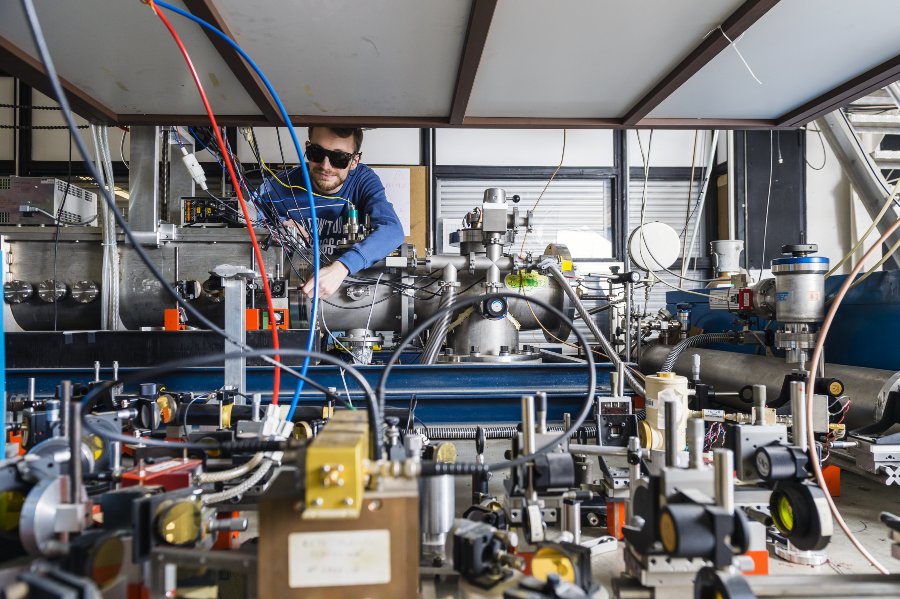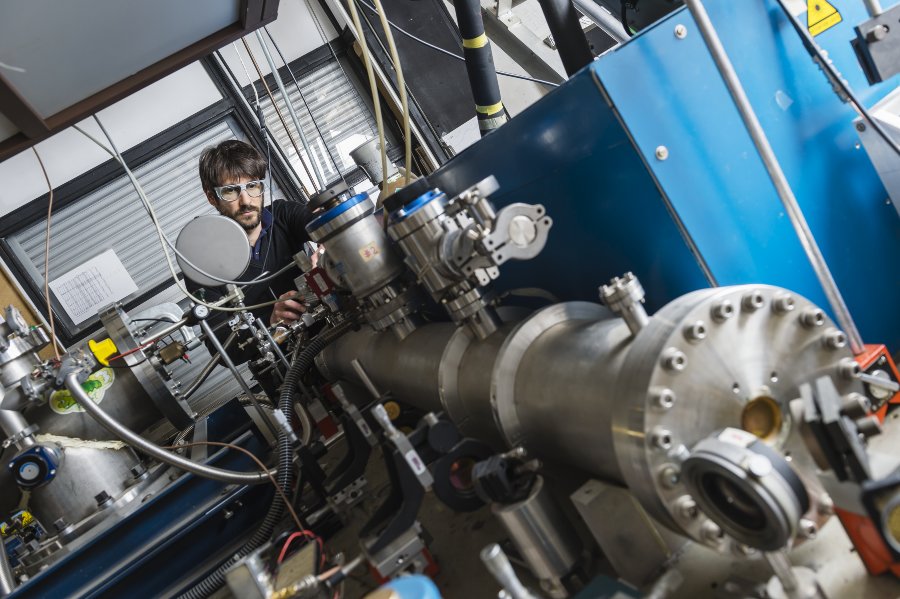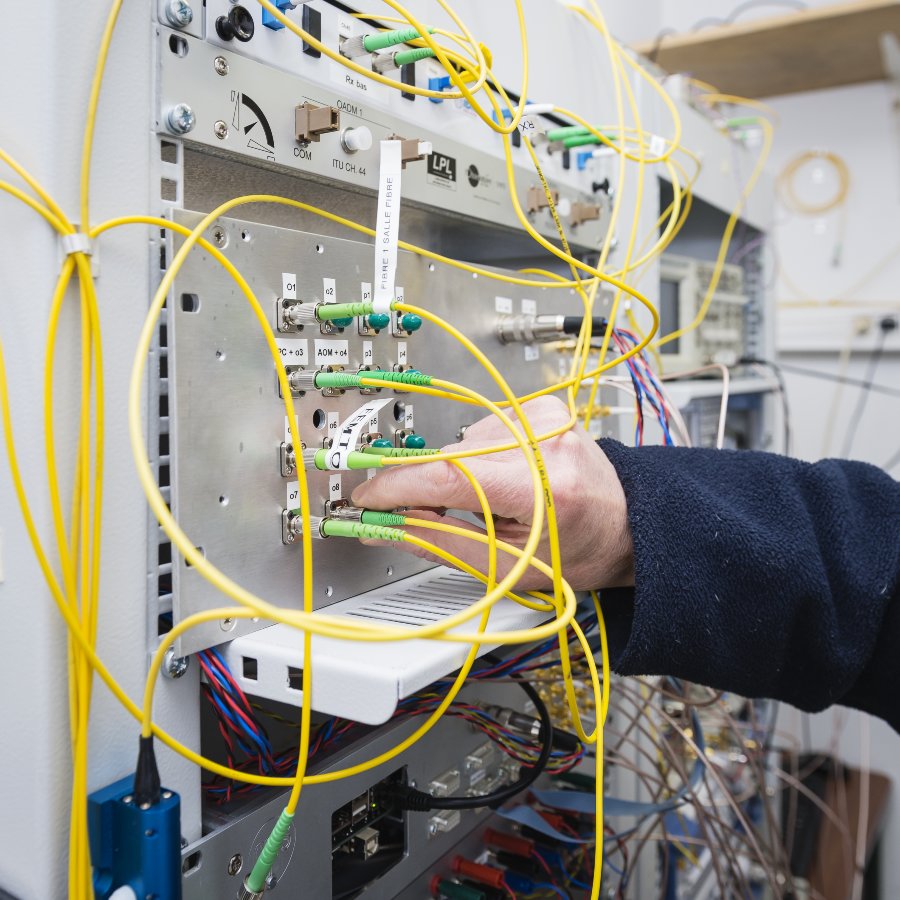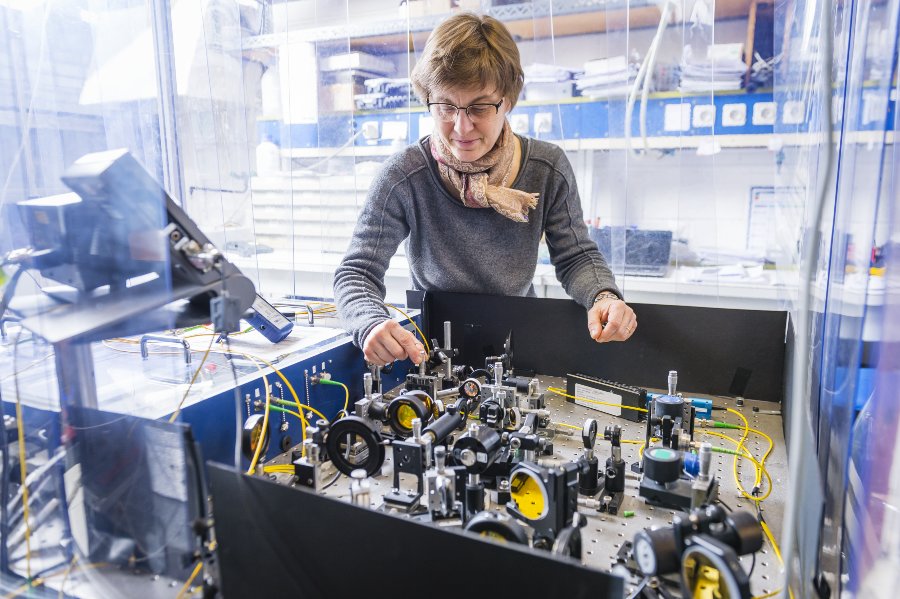Activities Time-Frequency:
Workforce: 17with: 7 permanents, 10 non-permanent
VILLETANEUSE, France
Activities of LPL in the field of time and frequency are mainly carried out by the Metrology, Molecules and Fundamental Tests group, which develops ultrahigh-resolution molecular spectroscopy experiments in IR and ultra-stable frequency transfer by optical fibers.
Those research projects are organized around the following axes:
Measurements of Parity violation effects using cold chiral molecules
Frequency transfer by optical link
Absolute frequency control with an optical frequency comb
Mise en pratique of the new kelvin
Compact frequency comb
The activities of other groups in LPL are also devoted to the study of the transport and magnetism properties of degenerate gases constituted of ultra-cold bosons or fermions.
Contribution to:
Equipex Refimeve+
Projet européen OFTEN
Projet européen CLONETS
International collaborations:
PTB, Braunschweig, Germany, optical fiber link and clocks measurements
NPL, Teddington, UK, optical fiber link and clocks measurements
Expertise :
- Oscillators
- RF and microwave oscillators and synthesis
- Microwave technologies• Microwave pulse excitation of rotational transition in molecules
- Optical oscillators, lasers
- Lasers locked to a Fabry-Pérot cavity• Semiconductor laser at 1.5 µm stabilized onto confocal Fabry-Perot cavity for frequency stability transfer.Ar+ argon laser prestabilized onto Fabry-Perot cavity at 514 nm and at 501 nm: linewidth of 30 kHz.Semiconductor laser at 1.5 µm stabilized onto a ring fiber cavity.
- Lasers locked to an atomic or molecular line• Mid-infrared lasers around 10 µm stabilized on molecular rovibrational lines (SF6 Sulfur hexafluoride or OsO4 Osmium tetroxide), detected with a saturated absorption scheme, possibly in transmission of a Fabry-Perot cavity.Lasers emitting in the near infrared (1.5 µm) locked onto molecular rovibrational line (HCN Hydrogen cyanide or C2H2 Acetylene), detected in linear or saturated absorption.Ar+ argon laser locked onto iodine I2 transitions at 514 nm and 501 nm in cell.
- Frequency combs• Optical frequency comb around 1.5 µm :comb stabilisation on an optical reference transmitted from Syrte by an optical link, dedicated servo loops, comb tuning on 2.5 GHzstabilisation of a quantum cascade laser on this comb. Semiconductor frequency combs at 1.55 µm: stabilization of the comb by optical injection of a stable CW source.
- Laser sources• Low noise quantum cascade laser (with home-made power supply) around 10 µmLow-noise home-made carbon dioxide CO2 laser around 9-11 µm
- RF and microwave oscillators and synthesis
- Synchronisation, frequency transfer and time scales
- Fibred optical links
- Purely optical methods• Optical link for ultrastable RF and optical frequency transfer. Active compensation of the propagation phase noise or passive compensation by two-way methodesDevelopment of repeater laser stations, extraction stations and multi-user stations.
- Fibred optical links
- Specific methods of time-frequency metrology
- Noise
- Phase noise, PLL• Numerous developments concerning PLLs and servocontrols
- Intensity noise• Narrow band noise rejection by digital device (70 dB rejection)
- Short term stability, long term stability• Stabilization of visible and IR laser sources (argon Ar+ laser at 515 nm and 501 nm, CO2 laser and QCL at 10 µm, fiber and semiconductor lasers at 1.5 µm)
Stabilization of a semiconductor frequency comb at 1.5 µm: stabilization of the comb by optical injection of a stable CW source
Stabilization of a 1.5 µm fiber optic comb with optical or RF reference, frequency sweep of the stabilized comb
- Systematics, Accuracy, Calibration
- Systematics in atom-light interaction• Study of the systematic effects in molecular spectroscopy: in saturated absorption, 2-photon and Ramsey fringes for rovibrational transitions around 10 µm. in saturation spectroscopy and Raman spectroscopy of iodine I2 at 514 nm and 501 nm.
- Systematics in time transfer methods• Fundamental and technological effects limiting the ultrastable frequency transfer over an optical link
- High resolution spetroscopy
- Molecular spectroscopy• Doppler-free spectroscopy of electronic transitions of molecular iodine I2 in cell near the dissociation limit: saturated absorption spectroscopy and Raman spectroscopy, narrow lines.
Rovibrational Doppler-free spectroscopy at 10 µm of molecules (NH3 Ammonia, SF6 Sulfur hexafluoride, ...) in a cell or a beam: saturated and two-photon absorption, Ramsey fringes, slow molecules detection, record resolution and uncertainty on frequency measurements, free-induction decay detection
- Molecular spectroscopy• Doppler-free spectroscopy of electronic transitions of molecular iodine I2 in cell near the dissociation limit: saturated absorption spectroscopy and Raman spectroscopy, narrow lines.
- Noise
Connected Sectors:
- Fundamental science
- Fundamental metrology• Measurement of the Boltzmann constant by Doppler spectroscopy of ammonia NH3, optical thermometry
- Tests of fundamental physics• Fundamental tests of physics with molecules: fundamental constants variations, parity non-conservation, molecular interferometryFundamental tests of physics using an optical link: clocks comparison, Sagnac effect
FIRST-TF Network
FIRST-TF Contact(s):




